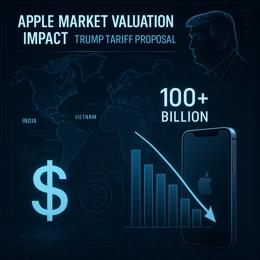Image created by AI
Sasol's Struggle Amid SOE Failures and Low Commodity Prices
South African energy and chemicals company Sasol has experienced diminished financial results for the first half of its 2024 fiscal year, which concluded on 31 December 2023. The downturn has been primarily attributed to the wavering vigor of the commodity market and the failures observed in key state-owned enterprises (SOEs), such as Transnet and Eskom.
According to the recently published financial report, Sasol's revenue has witnessed a 9% fall to R136.3 billion from the prior year's R149.8 billion. The shrinkage in revenue streams is a direct reflection of deflating chemical product prices that have pervaded all the regional markets in which Sasol operates.
Earnings Before Interest and Taxes (EBIT) also recorded a significant slump, settling at R15.9 billion—a 34% contraction when juxtaposed against the figures of the precedent period. This downfall is largely attributed to a fusion of factors including, but not limited to, lowered revenue, diminished gains on the valuation of financial instruments, and derivative contracts, despite a silver lining from decreased chemical feedstock prices in regions such as Europe, Asia, and the United States.
The company's financial health was further dented by remeasurement items amounting to R5.8 billion, a noteworthy shift from the prior term's impairments that tallied to R6.4 billion. Shareholders felt the ripple effects with a severe cutback in the basic earnings per share from R23.23 in 2022 to R15.19, registering almost a 35% plunge.
Sasol's narrative was shadowed by the macroeconomic volatility that has been a continuing trend, with oil and petrochemical prices waning and product demand proving to be shaky amidst relentless inflationary pressures. Additionally, Sasol pinpointed the layers of challenges imposed by the faltering performance of critical SOEs that clutch important roles within the company's value chain. These issues, coupled with an attenuating global growth forecast, have further tangled Sasol’s operational frameworks, stirring a notable impact on its business outcomes.
Executives at Sasol hinted at strategic moves for operational optimization within South Africa, but this semblance of improvement has been outshined by the shortcomings of Transnet and Eskom. The reverberations of SOE inefficiencies have transmitted through logistical and electrical supply chains, culminating in persistent toils for the chemical giant, an emblematic example of the larger struggles faced by industries amid national infrastructure constraints.
As Sasol navigates through these turbulent times, the spotlight falls on the potential for strategic realignment, improved resilience in operations, and the need for robust partnerships with state entities to mitigate risk and induce a more favorable business trajectory. These results serve as a clarion call to both the public and private sectors, emphasizing the urgent necessity for reform and investment within vital SOEs to facilitate economic stabilization and growth within South Africa’s industrial domain.










